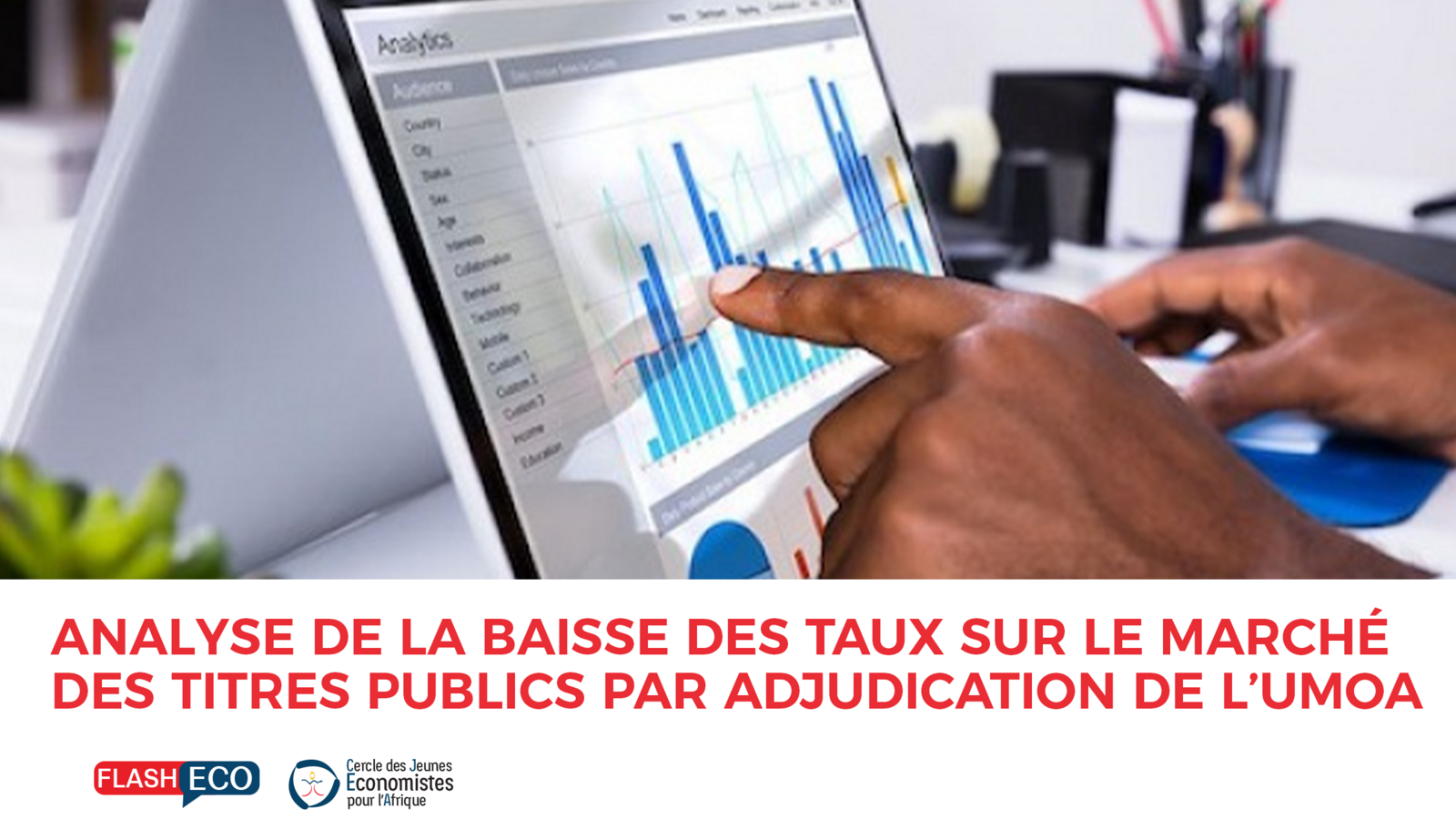
The WAMU auction market is a market on which the eight (08) member states of this zone issue debt securities to mobilize financial resources to finance their budgets.
In this study, we review the evolution of yields in this market from 2018 to the first half of 2021 (H1 2021).
Sources: compiled from auction results
Weighted Average Rate (WAR): corresponds to the actuarial rate of return obtained by keeping the bond until maturity.
TMC=i=1nTi*OiO where Ti is the interest rate of the bid Oi ; O the total value of the bids; and n the total number of bids.
Coverage Ratio (CR): the rate at which the amount tendered is covered by bids. TC=Montant total des soumissions recueilliesMontant émis
Since 2020, we have been witnessing a revolution and a normalisation of the WAMU government securities auction market. Indeed, since 2019, this market has been recording a continuous decline in yields that has become more and more pronounced in recent months, with the lowest yields in the market's history.
On the 1-year maturity, the average weighted average yield in the WAEMU fell from 6.20% in 2018 to 4.16% in the first half of 2021. For the 5-year maturity and over the same period the yield fell from 7.30% to 5.93%.
If on the 7-year maturity, the yield went up between 2018 and 2020, this could be explained by the fact that this maturity remained the longest maturity until 2020. But in 2021 the yield on the 7-year maturity fell from 6.48% in 2020 to 6.12% in H1 2021.
In addition, issues with longer maturities are more regular and the yields on securities, even though they are falling, now move in line with their maturity.
While the longest maturities available on the market in 2019 were those of 5 years (7-year securities being rare: 05 issues in total), since 2020 issues of 7-year maturity have multiplied to cover 7 of the 8 WAMU member countries. In addition, 10-year securities have been issued since 2020 (3 issues) and are becoming more regular in H1 2021.
Similarly, while issues with lower maturities were often more remunerative than those with higher maturities, since 2020 this trend has become more normal. Thus, in 2020 and H1 2021, yields are an increasing function of maturities.
While this trend of continuously declining market rates can be explained by the strong demand for securities, as reflected in bidding coverage rates, the improvement in coverage rates even for longer maturities would be supported by certain factors.
The fall in market rates is an advantage for issuing States which are asking to mobilize longer resources at competitive costs. The States with the help of the WAMU Securities Agency are therefore working towards this end. Indeed, the States of Côte d'Ivoire, Senegal and Benin have already been soliciting the international debt market for some years now for very long maturities (over 20 years) at lower interest rates than those offered by the regional market, and with larger volumes.
This recourse to the international market does not favour the promotion of the regional market, in the sense that the mobilization of a significant volume of debt on the international market limits the recourse to other borrowings to respect the debt ratio. The decline in rates on our market and the greater possibility of mobilizing long resources with significant volumes would promote the development of the regional market.
Some measures taken by the BCEAO since 2020 also contribute to the fall in rates. With the advent of the Covid 19, the need for financing of States has increased to cope with the consequences of the pandemic. Thus, instruments such as Covid 19 Bonds and Recovery Bonds have been structured, with the will of the BCEAO to support the States in mobilising resources at low cost. Thus, a special 3-month refinancing window was set up to enable banks to refinance the Bonds. It should be noted that WAEMU banks intervene on the market on their own account and finance more than 90% of the issues on the market. Another special refinancing window called the "revival window" for revival Bonds was set up to refinance Bonds for a minimum period of 6 months.
The continued decline in interest rates on the securities market may result in the withdrawal of individual investors or legal entities other than banks. These investors are looking for better yields and prefer shorter maturities. However, the subsequent reduction in interest rates on traditional savings products could slow the withdrawal of these investors.
In any case, retail investment in the government securities market remains low.